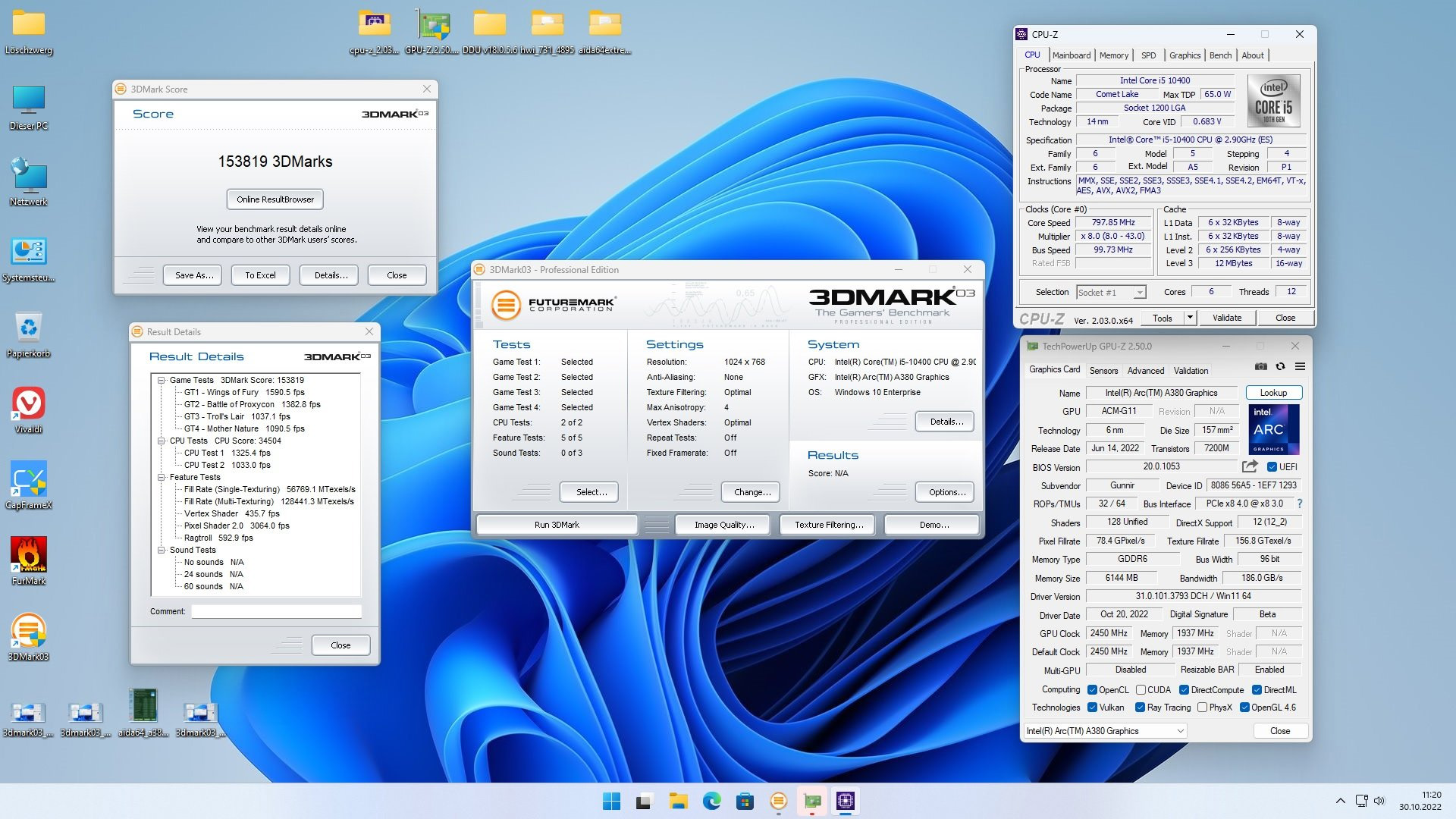Tech works in mysterious ways! Performance is a top priority for both users and companies these days, given the intense competition in the CPU, GPU, and the rest of the hardware space.
No one wants to be the second best.
Certainly not Intel.
The company is now competing in multiple domains in the consumer space after opening a new front in the form of dedicated graphics cards under the Arc branding. NVIDIA and AMD finally have a worthy competitor, and gamers finally have a viable third option.
Although Intel has a fair way to go before it can be crowned king in this space, a recent development may please it.
That’s because the performance tips that Microsoft recently shared for Windows 11 are helping Intel in unexpected ways. Benchmarks show that its Arc lineup of discrete GPUs are seeing a decent uptick in performance, making notable gains when put to test by users.
According to one such user, Löschzwerg, the Arc A380 graphics card gained around two to three thousand points in 3DMark03, a DirectX 9 benchmark.
This makes for a 5.2% uptick in performance as the card originally got around 58,000 points in this test.


Meanwhile, things are radically better in DXVK, a Vulkan-based translation layer for Direct3D 9/10/11, where performance increased by threefold.
And this is mighty important, because Intel does not run DX9 natively on Arc. The company has instead opted for the D3D9On12 mapping layer. As a result, the potential of these new cards is drastically reduced compared to the other options in these older games.
While Microsoft did not detail the kind of boost users could expect from the changes it recommended, reports back then hinted that turning off these security features in the OS could mitigate performance losses of up to 30%.
Detailed testing like the one above clears things a bit and confirms that there is massive headroom in these older titles.
At least for owners of Intel GPUs.




